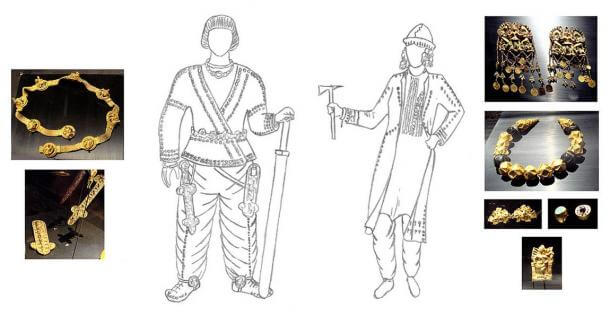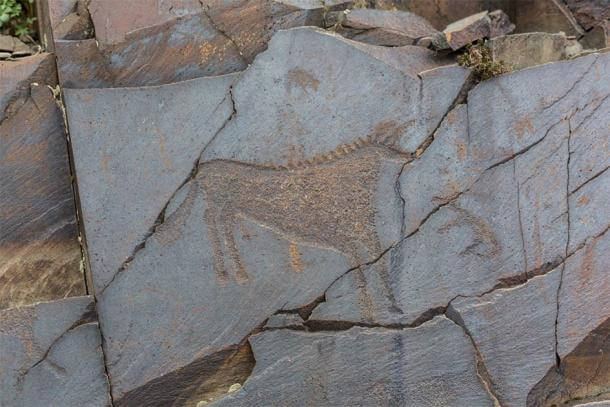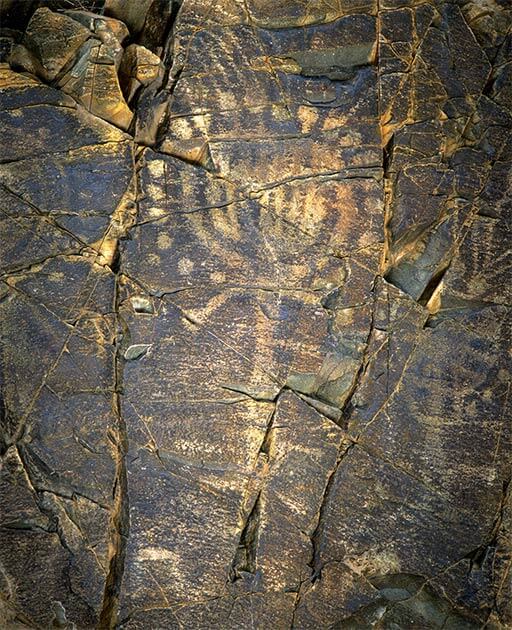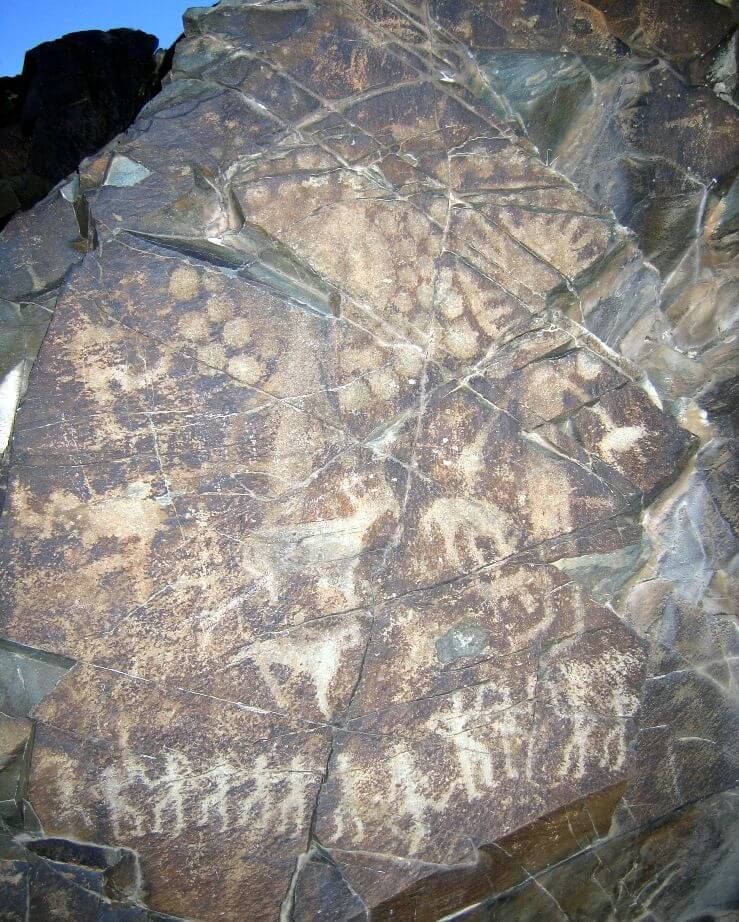
Petroglyphs from Tamgala: Rituals, shamans and treasures of nomads
 23. 09. 2020
23. 09. 2020

The Tamgaly Rock Gorge in Kazakhstan, now a UNESCO World Heritage Site, offers evidence of the rich history and culture of the ancient inhabitants of Central Asia. The area was once crisscrossed by countless groups of nomads for whom this steppe has been the homeland for millennia. Along with shrines and burial mounds, approximately 5000 rock carvings dating from the Bronze Age to the 20th century have been found here, providing a unique probe into the life and imagination of these ancient civilizations.
History of Tamgal petroglyphs
The outcrops of black flint located in the gorge of Tamgala (or also Tanbaly) are suitable for creating engravings. The valley, surrounded by the vast arid Chu-li mountains, provides shelter, springs and rich vegetation in the otherwise inhospitable steppe, which has attracted nomads since the early Bronze Age (1500 BC). Among those who traveled across large areas of Eurasia and considered the valley sacred were the Scythians and the Sarmathians.

Artifacts of the Saka people found in Tilly Tepe's tombs and reconstructions of their use by men and women found in these tombs.
From the earliest period, the valley seems to have been a sacred place, as 48 shrines and burial grounds were found here. Based on the presence of the Kurgans - burial mounds - this place for the last rest was chosen by members of the elite. Numerous tombs take the form of stone enclosures with cabinets and cysts that date to the Middle and Late Bronze Ages. Kurgans built of stone and clay date back to the Iron Age. One of the Kurgans found was associated with the Saka people, a confederation of nomads who ruled large areas of Central Asia and parts of India in the 1st century AD.
Like the Scythians, Saka came from an older culture called Andronovo. The central part of the canyon contains the densest concentration of engravings and objects called altars, which were probably used to perform the sacrifices. Why this valley is sacred is not certain, because the people who inhabited or visited it did not leave written monuments. Tamgaly means "place of marks" in Kazakh, and a large number of tribal ceremonies apparently took place here, during which shamans entered a trance and talked to the inhabitants of the spirit world. During the 11th century, most of Central Asia was Muslim and the Turkish tribes that controlled the steppes converted to Islam. The valley continued to attract the attention of nomads, who repaired some rock carvings and also added their own. Many carved their names into the rock. Unlike the local population, most of the world did not know about this place until the middle of the twentieth century, when archaeologists began exploring rock art and other monuments. Today, petroglyphs and historic sites are part of the Archaeological Park and the Kazakh National Monument.
The image of Tamgal petroglyphs
Tamgaly is quite possibly the most impressive of the 1500 similar places found in Kazakhstan. Many rocky outcrops and slopes located in this breathtaking landscape are covered with images. They capture hunting and falconry scenes, giving them a glimpse into the lives of nomadic hunters and ancient herders. The animals shown also include sheep, camels, cows and horses.
The animals also probably represented deities, and the bull was a symbol of power and might. Symbols were also found, which probably represented different tribes. Petroglyphs depicting the spiritual life of ancient people, their shamans, as well as rituals and dances were also engraved into the almost perpendicular rock walls. A number of admirable depictions of people with sun-disk heads probably represented solar deities. One part of Tamgala located between the high walls of the canyon is called the Sun Temple by the locals.
For more than 3000 years, nomads depicted what they considered most valuable and often modified older depictions to suit cultural changes and new patterns. Unfortunately, some of the rock carvings were damaged by visitors and shocks caused by Soviet tanks during military exercises.
How to visit Tamgaly
The Tamgaly Gorge is located 160 km northwest of the capital of Kazakhstan, Almaty. There is no public transport, but organized tours are organized. A system of markers and arrows will guide you through the place. Tamgaly should not be confused with Tamgaly Tas, a place in Kazakhstan known for its Buddhist rock art.
Tip from Sueneé Universe
Wolf-Dieter Storl: Shamanic Techniques and Rituals
Shamanic techniques and rituals, merging with nature - the author knows all about it Wolf-Dieter Storl tell in great detail. Get inspired by these rituals even in today's hectic times and discover peace within yourself.









 5
5